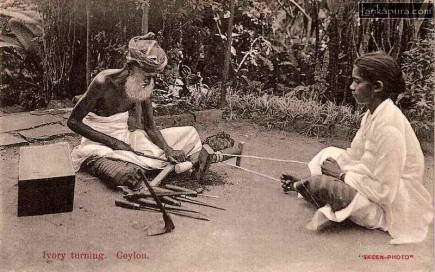
Ivory Carving in Early Sri Lanka
In Sri Lanka elephants are endangered & ivory carving, as an art no longer exist. Once famous for the numbers & quality of it’s elephants, whose tusks were carved & exported since ancient times.
After Sri Lanka became under colonial powers such as the Portuguese, Dutch and English. Smugglers, illegal traders, big game hunters and plantation owners all played a part in the disappearance of elephants & it’s corollary, the ivory trade.
The destruction of the forests to accommodate the plantation enterprise, destroyed the water resources that irrigated the rivers and soon the village tanks went dry. The tanks were abandoned and similarly the fields. The colonial British were happy, they got their plantation revenue. But Ceylon was robbed of its cloud forests and its population of elephants, including tuskers by this indiscriminate systematic and even sudden annihilation of the elephant herds that lived happily in the forests. This is the prime reason for the reduced number of tuskers among the herds in Sri Lanka.
Over 35,000 elephant tusks from Ceylon were recorded at a store in a warehouse on the London docks. The quality of Ceylon elephant ivory was regarded as being superior and all the early piano keys were made from ivory collected by the indiscriminate killing of elephants in Ceylon. Giving rise to piano playing as tickling the ivories.